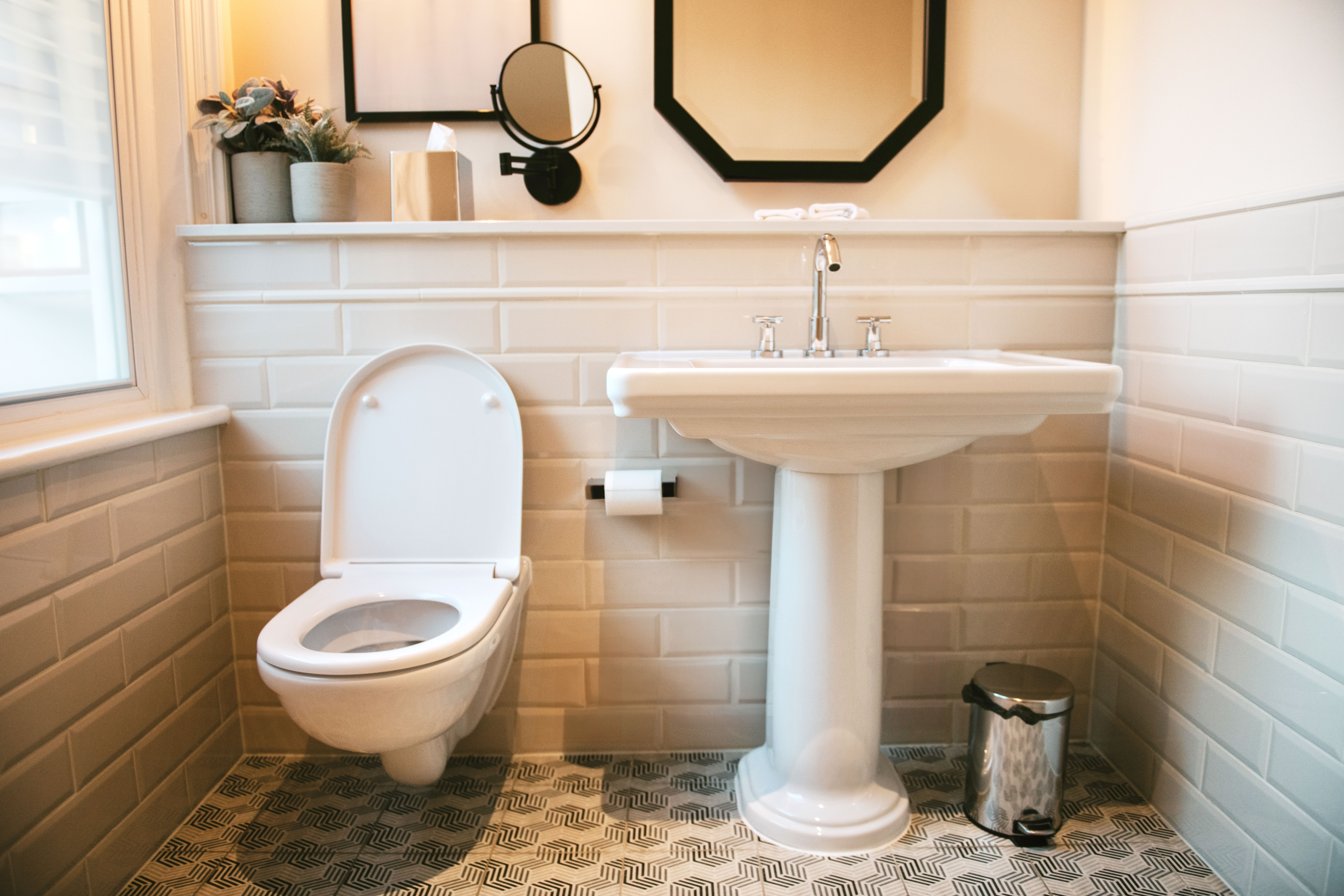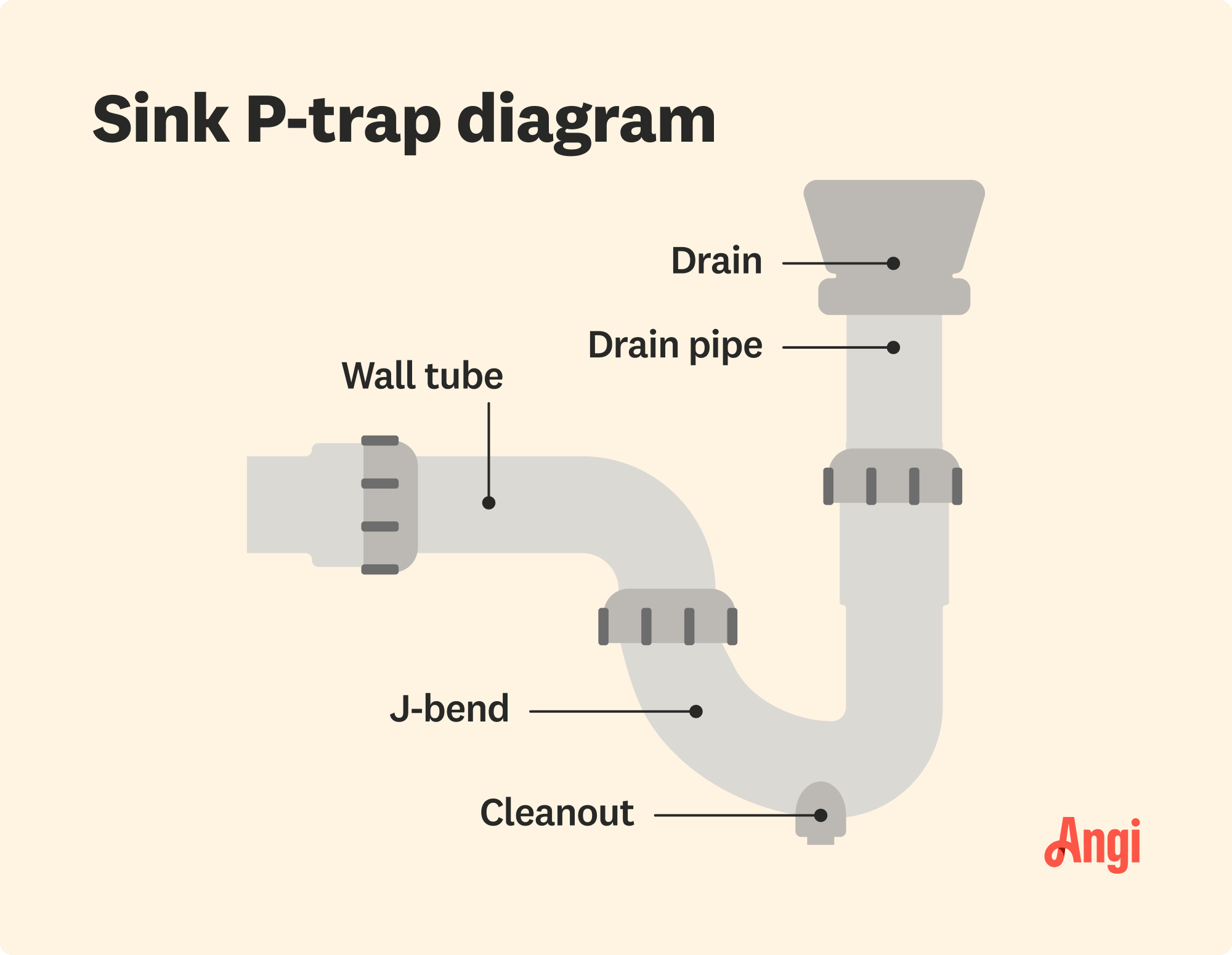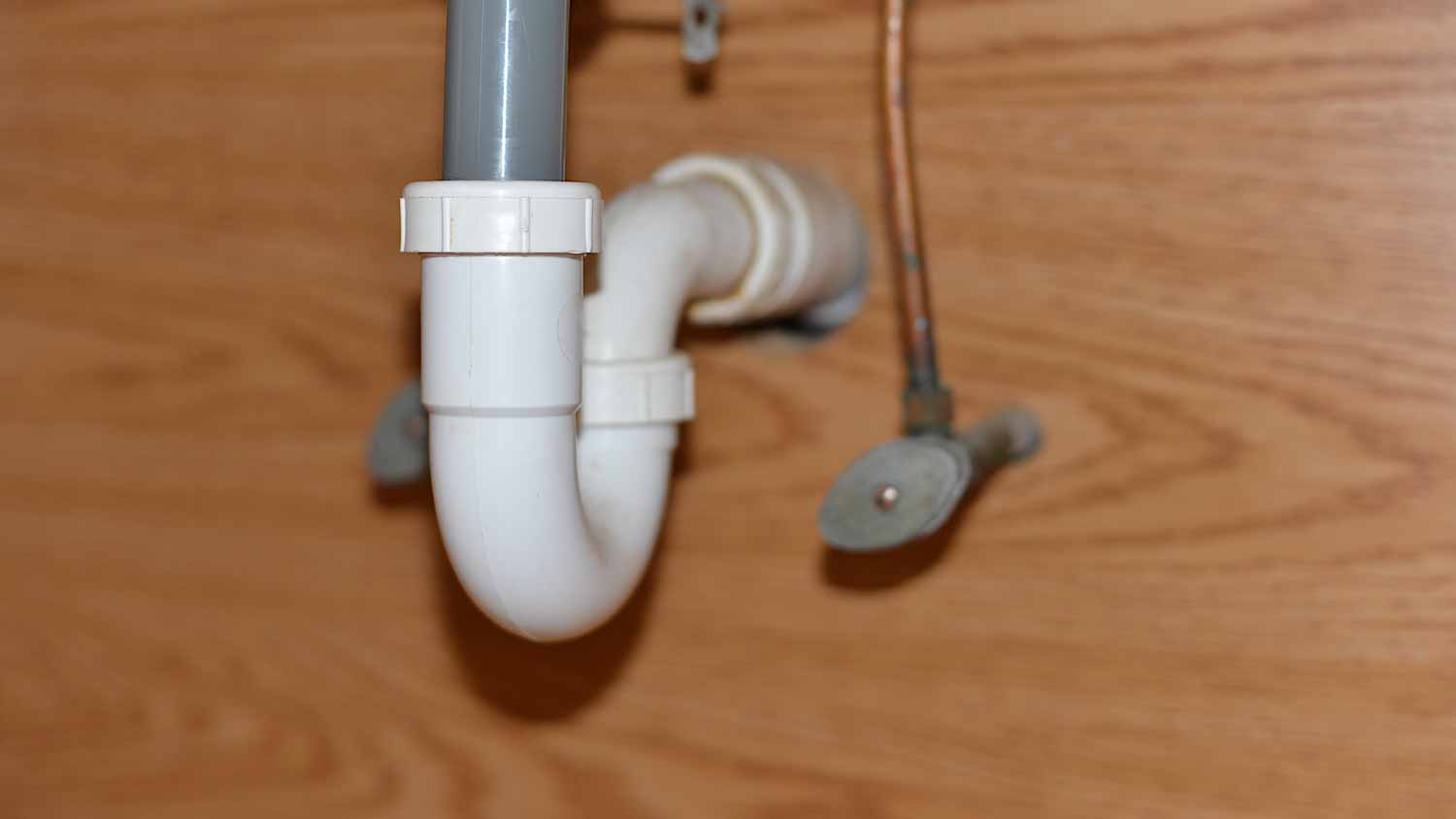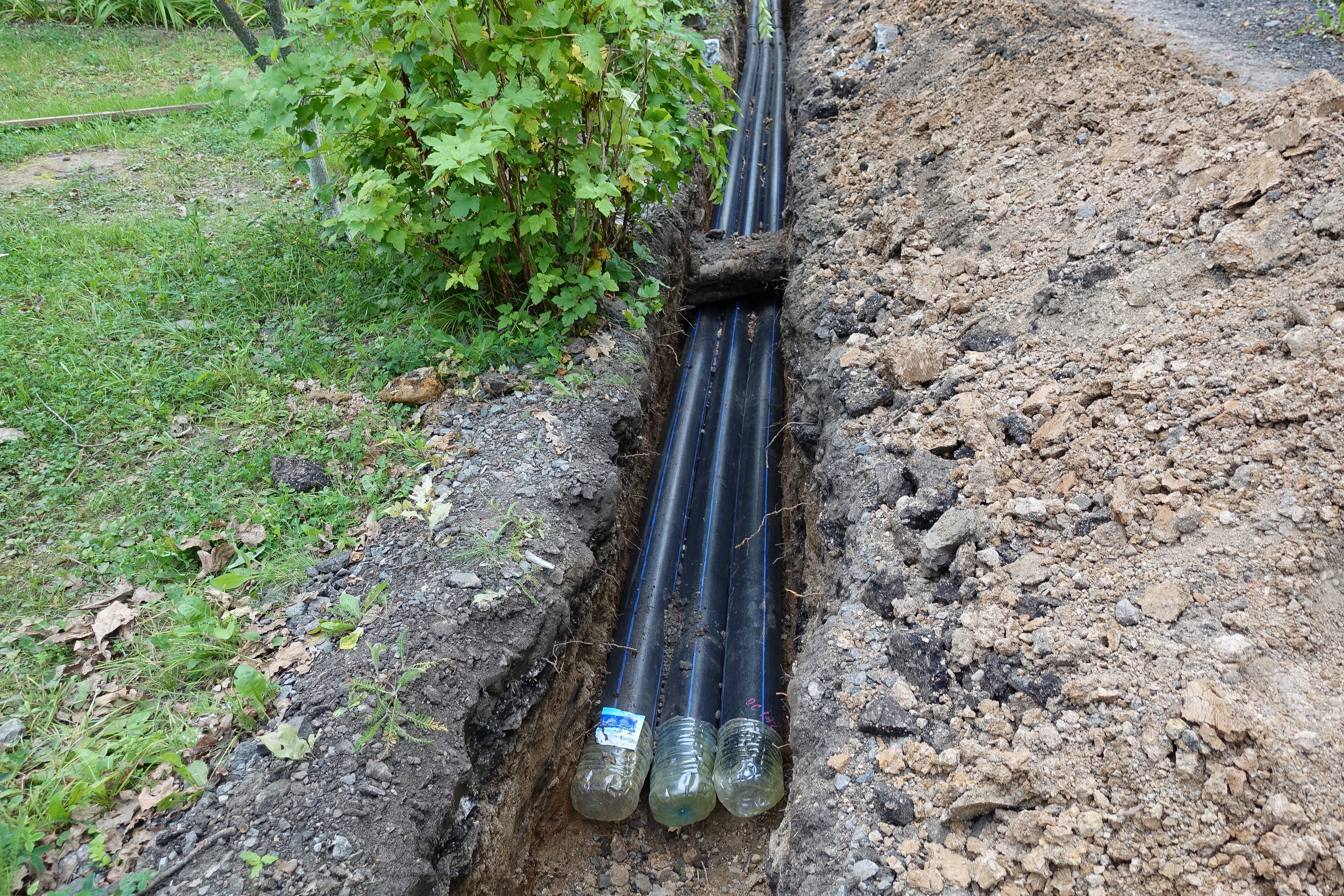
Learn how much a plumber costs in Atlanta and how to hire a licensed pro for repairs, upgrades, or emergency plumbing service in your neighborhood.
If you notice weird odors coming from your drain, you may have a P-trap problem


P-traps are an essential part of your sink, shower, or bathtub drainage system.
The main functions are to stop sewer gases from wafting into your home and prevent clogs by trapping debris.
They’re made up of three separate parts.
You can remove and reinstall your P-trap to fix leaks and clogs.
If you’ve ever looked beneath your bathroom sink, you’ve probably encountered a P-trap. This section of piping—which gets its name from its shape—is an essential part of the drainage systems found beneath your sink, shower, and bathtub. No bathroom is complete without it, even though we may roll our eyes at the storage space it takes up in our under-sink cabinets. So, what is a P-trap, and how does it work? This guide will tell you everything you need to know.
Like other common plumbing terms, a P-trap is exactly what it looks like: a small section of curved piping that’s shaped like the letter P and found underneath sinks, bathtubs, and showers. As a crucial piece of your fixture’s drainage system, the P-trap has two main functions:
It prevents sewer gases from escaping your drain line: The P-trap holds a continuous level of water that acts as an airtight seal and prevents sewer gases from wafting up your drain into your bathroom. If you smell sewer gases, it’s a good indication that your P-trap has either dried out or leaked.
It prevents clogs: The curved shape of the piping traps debris like hair, sediment, and other solids, which prevents clogs deeper in your plumbing or municipal sewer system.
P-traps come in all different sizes for different fixtures. Most of the time, they’re made from PVC, but some are made from steel. The curved area holds about one and a half to two inches of water. When you use your plumbing fixture and water runs down your drain, it flushes out the old water in the P-trap and replaces it with new water.
P-traps work by collecting water in the low part of the curved section. This small amount of trapped water creates a water seal that prevents sewer gases and smells from backing up through the plumbing pipes and into your home.
This water seal gets flushed out when you run the water in your sink, shower, tub, toilet, or other fixture, but when you turn off the water, a new water seal forms in the depression of the pipe. If you don’t run new water through the pipe for some time or your P-trap has a leak, the water seal can evaporate and allow gases and smells to escape.

If you plan to install a sink drain, you’ll need to know the parts of a P-trap. Most P-traps are made from three separate pipes. Each part (as shown on the above P-trap diagram) has a different function:
Tailpiece: This vertical section of piping (also known as an inlet) attaches to the bottom of your drain and funnels wastewater into the J-bend, the curved section of your P-trap.
J-bend: This curved section of piping (also known as the trap) catches debris and holds a small amount of water that serves as a barrier against sewer gases.
Wall tube: This section of piping (also known as an outlet) funnels water from the J-bend into the rest of your home’s drainage system.
Cleanout: The cleanout gives plumbers access to the P-trap so they can clear out smaller clogs and debris without removing pipes. The cleanout is typically located on the bottom of the J-bend curve, but some drainage systems have a separate cleanout pipe.
If you look under your sink and notice your P-trap has an extra curve, you don’t actually have a P-trap. Instead, you have an S-trap. Like the name suggests, this type of trap is shaped like the letter S. It was an old plumbing standard. In fact, it was the precursor to the P-trap that initially made flushable toilets a possibility.
S-traps no longer meet plumbing code. The design was phased out because the curves can siphon water out of the trap, eliminating the barrier and allowing sewer gas to seep into homes. If you have an older home that still has S-traps beneath your fixtures, you should hire a local plumbing repair service to replace them.
When the water seal in a P-trap evaporates, leaks out, or siphons (when poor venting or changes in water pressure pull the water out of the P-trap), the water seal is broken and gases and smells will back up into your home. This is called a dry P-trap, and you’ll likely notice it when the drain in your bathroom, kitchen, utility room, or other location begins to stink.
Along with sewer gas odors, a dry P-trap can pose health hazards. Sewer gases can include methane and other gases that can lead to headaches and nausea. Dry traps can also open up a pathway for pests like rodents, cockroaches, and spiders to enter your home through the plumbing system.
The good news is that you can keep P-traps from drying out without much effort. The easiest way to do this is to simply use plumbing fixtures regularly. If you have a seldom-used guest bathroom or utility sink, flush the toilet, run the tap, or pour a cup of water down the drain occasionally to help replenish and maintain the water seal. You can also add a small amount of mineral oil to drains; this will form a thin layer over the water seal and can slow evaporation.
It’s also best to regularly inspect your plumbing for leaks or signs of dripping water. A leaking P-trap won’t maintain its water seal, which can lead to drying out. If you experience dry traps even after taking steps to prevent them, check for leaks, poor venting, or water pressure problems that can siphon out water and leave you with a stinky bathroom.

To fix a leaking P-trap, you’ll need to remove it. Before you start, place a bucket below the trap to catch water.
Gently loosen the nuts on either side of the J-bend pipe (you can use pliers if they’re particularly tough).
Note the placement of the washers so you can reassemble the P-trap later.
Once the trap is loose, pull it straight down to remove it.
Empty the water from the pipe into your bucket.
Reassembling your P-trap is fairly straightforward. Follow these steps:
Start by reinstalling the J-bend pipe on the wall tube.
Make sure to put the washer and nut back in place, but leave the connection loose.
Line up the J-bend pipe with the drain tailpiece.
Reinstall the J-bend pipe along with the washer and nut.
Check your work, then tighten the nuts to seal the connection.
Run the water to make sure there are no leaks.
If there are leaks, loosen the nut and check the placement of the washers. You may need to reinstall them.
Keep in mind, many clogs may be located deeper in your plumbing than the P-trap. In that case, it’s a good idea to hire a plumber.
My ac system failed, and I was in disparate need of a new system without breaking the bank. The good people at Dixie Electric, Plumbing, and Air were amazing! Not only did I get a great price, but the technicians were able to install my new system in two days. The were on time and very...
Project: Repaired & Replaced Plumbing It's difficult finding quality workmanship these days. However The young man that was given my job is an expert in his craft. I am very pleased with the work done on my premise. I finally found a Plumber I will call again and I would gladly...
Leaving a less than stellar review giving me no pleasure yet I feel obligated to do so. Rod renovated two of my lofts. The 1st time was a complete disaster because his project manager, a war veteran, suffered personal problems during the drawn out renovation. But Rod impressed me by owning up...
the plumber did the work fairly easy took him less than 5mins. However the plumber never gave cost of service before beginning inspite of the fact when i set the appt that was my first request an estimate. i was told it was $39 for them to come out and at that time id be told cost of repair....
The technician called when he was on his way and was at my home well within the time frame I was given when I made the appointment. He was very knowledgeable and took the time to explain what was wrong and what he would do to fix it. My bathtub is draining perfectly, again. The price was...
From average costs to expert advice, get all the answers you need to get your job done.

Learn how much a plumber costs in Atlanta and how to hire a licensed pro for repairs, upgrades, or emergency plumbing service in your neighborhood.

Discover the primary factors that will affect your main water line replacement cost in Atlanta, including length, material selection, and installation method.

Discover average main water line repair costs in Atlanta, GA, plus local factors that affect price, when to hire a pro, and how to maximize your budget.

Accidents can cause your sewer pipe cap to break. While fixing it is essential, don’t jump right in. This guide will prepare you with must-know tips.

If the temperatures plummet below 20 degrees, you should pay attention to your home’s pipes. Learn what to do if pipes freeze, and how to prevent them from bursting.

A dripping sound in your walls could be signs of a big problem with a big price tag. Learn how to find the issue and get it fixed.